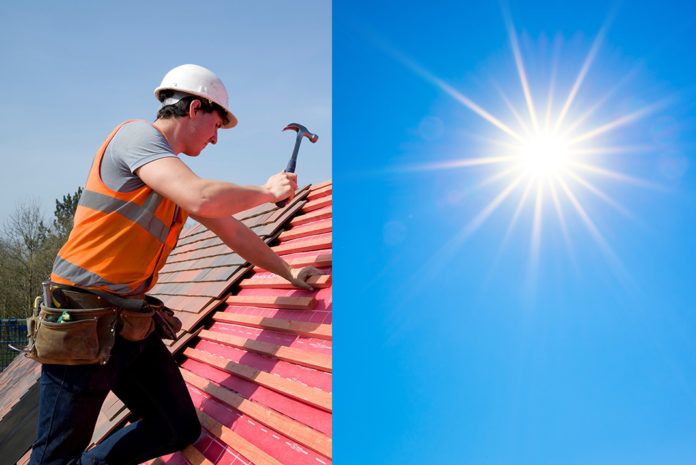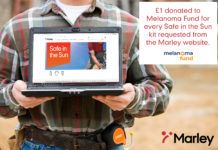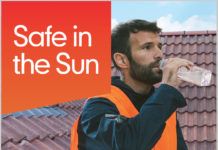With outdoor workers at higher risk of skin cancer, premature ageing and eye damage from exposure to UV rays, Howard Buckley, company EHS manager at Marley, says all roofers should take simple steps to protect themselves this summer
If people could see the invisible UV rays that they are exposed to every day, then they would take much greater care with protecting their skin and eyes. UVA and UVB rays can come from many directions; they radiate from the sun but are also reflected from the ground, glass and bright surfaces and, despite popular opinion, most clouds don’t offer protection.
The amount of time spent outside means that outdoor workers, such as roofers and bricklayers, are at greater risk of skin damage from UV rays, including premature ageing and skin cancer. In fact, as well as being the cause of 83% of skin cancer cases, research has found that UV exposure is responsible for a staggering 80% of the visible signs of ageing on the face, such as wrinkles and fine lines. Over many years, it can also lead to pigmentation, reduced skin elasticity and a degradation of skin texture. With just a 2% increase in skin damage potentially ageing a face by three years1, you only have to look at the picture of the man in this article to see the impact that years of sun exposure can have.
Yet, when it comes to your face, it isn’t only your skin that is at risk. After the skin, the organ most susceptible to damage from sunlight is the eye, as more than 99% of UV radiation is absorbed by the front of it. People who work outside for long periods of time are at the greatest risk of eye damage from UV radiation and, over many years, this can lead to visible ageing around the eye area, cataracts, skin cancer on the eyelids and even vision loss.
The good news is that it isn’t too late to take action. There is a belief that people get most of their sun exposure before the age of 18, but in actual fact, the effect of UV radiation is cumulative over a lifetime. Indeed, an American study2, found that people acquire only 23% of sun damage by the age of 18 and get about 10% more every decade after that.
So, while you can’t change what you have done in the past, you can make sure that you take action now to protect your skin and your eyes from dangerous UV rays when working outside.
Marley’s top ten safe in the sun tips:
- Keep a shirt or jacket on and opt for tightly woven fabrics, which help to form a barrier to the sun’s harmful rays.
- Don’t leave exposed skin unprotected. Use sunscreen with an SPF of at least 25 and remember to re-apply regularly. Make sure you also use an SPF lip balm.
- Make sure you apply suncream even when it is cloudy – up to 80% of dangerous UV rays can pass through a cloudy sky.
- Wear a hard hat at all times, preferably with a brim and flap that will cover the ears and the back of the neck.
- Drink plenty of water and stay hydrated. In very hot working conditions, experts have found that workers on site can lose up to 1.5 litres of water in sweat every hour! Keep individual containers of cool, clean water within easy reach at all times so it is easier to stay hydrated.
- Make sure rest breaks are taken in shaded areas.
- Check your skin regularly for unusual spots and moles, or any changes to existing spots and moles.
- Wear a pair of safety sunglasses with UV protection. Look for a UV 400 rating and check they are certified in line with EN 166 (personal eye protection) and EN 172 (sun glare filters for industrial use).
- As safety sunglasses will only cover part of your face, to prevent skin cancer and ageing, make sure you also apply sunscreen to the rest of your face.
- Get regular eye examinations and be vigilant – if you have prolonged patches of dry or sore skin on eyelids, or any trouble with your vision, seek medical advice as soon as possible.
Marley has hundreds of free mini bottles of suncream to give away as part of this year’s Safe in the Sun campaign. For your chance to get one, simply email your details to info@marley.co.uk. For more information about sun safety, visit www.marley.co.uk/safeinthesun
References
1. Clinical, Cosmetic and Investigational Dermatology Journal
2. American Society for Photobiology




